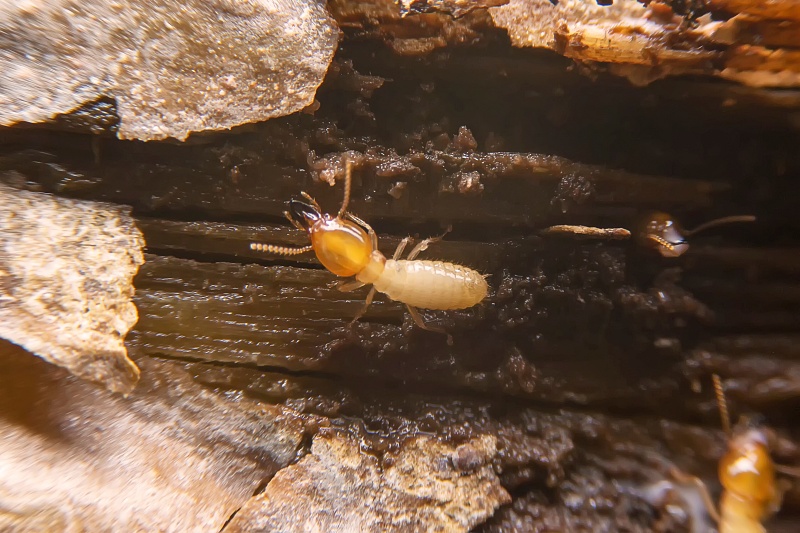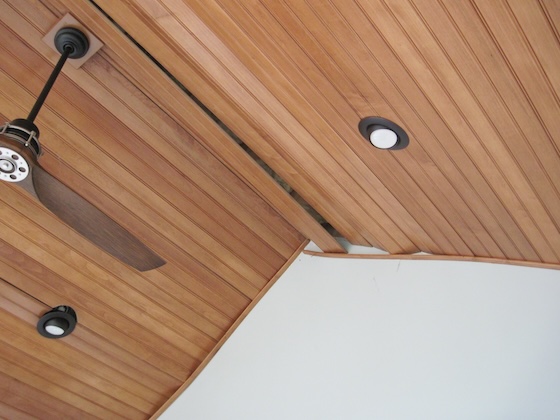
Understanding Subterranean Termites: A Brief Overview
Subterranean termites are a common type of termite that live and thrive underground. They are highly organized insects with a complex social structure, consisting of workers, soldiers, and reproductive individuals. These termites are known for their ability to cause extensive damage to wooden structures, as they feed on cellulose found in wood.
One key characteristic of subterranean termites is their need for moisture. They build mud tubes or tunnels made from soil and saliva to protect themselves while traveling above ground. These tubes also help them maintain the necessary humidity levels for survival. Subterranean termites can enter buildings through cracks in foundations or other small openings.
The damage caused by subterranean termites can be significant if left untreated. Signs of an infestation include hollow-sounding wood, discarded wings near windowsills or door frames, and visible mud tubes along walls or foundation areas. It is important to address any signs of infestation promptly to prevent further structural damage.
Understanding the behavior and habits of subterranean termites is crucial in effectively preventing and treating termite infestations. By implementing proper construction techniques such as using physical barriers like metal screens or treated lumber during building processes, homeowners can reduce the risk of termite entry into their homes. Additionally, choosing termite-resistant materials when constructing new structures can provide long-term protection against these pests.
Being aware of the presence and potential threat posed by subterranean termites is essential for homeowners and builders alike. Understanding their biology, signs of infestation, prevention methods like physical barriers during construction stages, as well as selecting appropriate materials will go a long way in safeguarding properties against these destructive pests.
Identifying Common Signs of Subterranean Termite Infestation

Subterranean termites can cause significant damage to structures if left undetected and untreated. Identifying common signs of subterranean termite infestation is crucial in order to take prompt action and prevent further destruction. One of the most noticeable indications is the presence of mud tubes, which are small tunnels made by termites for protection while they travel between their nest and food source. These tubes are typically found along foundation walls or other areas where the ground meets the structure.
Another sign to look out for is discarded wings near windowsills or light fixtures. Subterranean termites swarm during certain times of the year, and after mating, they shed their wings as they establish new colonies. Finding these discarded wings indoors may indicate that a termite colony has already infiltrated your home.
Wood damage can also be a clear indicator of a subterranean termite infestation. Termites feed on cellulose material such as wood, causing it to become hollowed out or weakened from within. Look for sagging floors, loose tiles, or buckling wooden surfaces as potential signs of termite activity.
By being vigilant and observant for these common signs, homeowners can catch an infestation early on and seek professional help before extensive damage occurs. Regular inspections by pest control experts are recommended to ensure any potential issues with subterranean termites are promptly addressed without delay in order to protect your property investment from costly repairs down the line.
Importance of Physical Barriers in Termite Prevention
Physical barriers play a crucial role in preventing termite infestations. These barriers are typically made of materials that termites cannot penetrate or chew through, such as metal screens or concrete slabs. By installing physical barriers around the foundation of a structure, homeowners can effectively block termite entry points and reduce the risk of an infestation.
One popular type of physical barrier is a metal screen or mesh that is placed around the perimeter of a building’s foundation. This screen acts as a physical barrier, preventing termites from gaining access to the structure. It is important to ensure that this screen extends below ground level to prevent termites from burrowing underneath it. Additionally, regular inspections should be conducted to check for any gaps or damage in the screen that may allow termites to enter.
Another effective form of physical barrier is the use of concrete slabs. These slabs are poured directly onto the soil surrounding a building’s foundation, creating an impenetrable barrier for subterranean termites. The thickness and quality of these slabs should be carefully considered during construction to ensure maximum effectiveness.
In addition to their ability to prevent termite infestations, physical barriers also offer long-term protection against other pests and moisture-related issues. By investing in proper construction techniques and materials that incorporate physical barriers, homeowners can significantly reduce their risk of termite damage and maintain a structurally sound property for years to come.
Choosing the Right Construction Techniques for Termite-Resistant Structures
One important factor to consider when constructing termite-resistant structures is the use of concrete foundations. Concrete provides a strong barrier against termites, as these pests are unable to penetrate through its solid surface. By using reinforced concrete footings and slabs, you can significantly reduce the risk of termite infestation in your building. It is also essential to ensure that there are no gaps or cracks in the concrete, as termites can exploit even the smallest openings.
Another effective technique for termite-resistant construction is incorporating physical barriers into the design. These barriers act as deterrents, preventing termites from accessing the structure. One common type of physical barrier is stainless steel mesh or graded stone barriers placed around the perimeter of the building’s foundation. These materials create a physical obstruction that termites cannot pass through easily.
Additionally, proper ventilation plays a crucial role in preventing termite infestations. Moisture control is key since subterranean termites thrive in damp environments. By installing vents and ensuring adequate airflow throughout your structure, you can minimize moisture buildup and discourage termite activity.
By employing these construction techniques – utilizing concrete foundations, implementing physical barriers, and maintaining proper ventilation – you can greatly enhance the resistance of your structures against subterranean termites. Taking proactive measures during construction will save you time and money by reducing potential damage caused by these destructive pests over time.
Exploring Different Materials for Termite-Proof Construction
One material that has shown great promise in termite-proof construction is concrete. Concrete is a dense and solid material, making it difficult for termites to penetrate and feed on. Additionally, the alkaline nature of concrete acts as a deterrent for termites, as they prefer environments with lower pH levels. By using reinforced concrete in the foundation and walls of a structure, homeowners can greatly reduce the risk of termite infestation.
Another material that has gained popularity in recent years for its termite-resistant properties is steel. Steel framing offers several advantages when it comes to protecting against termites. Unlike wood, steel does not provide any nutritional value or cellulose content that termites require for sustenance. Additionally, steel frames are non-combustible and do not warp or rot like wood does over time. This makes them an excellent choice for areas prone to both termite activity and natural disasters.
Lastly, composite materials have also emerged as viable options for termite-proof construction. These materials are typically made from a combination of plastics and fibers such as fiberglass or carbon fiber. They offer high resistance to moisture absorption, which is attractive to termites seeking damp environments. Composite materials are also highly durable and resistant to decay or warping caused by pests or environmental factors.
Incorporating these different materials into the construction process can significantly enhance the overall resilience of structures against subterranean termites. It’s important to consult with professionals who specialize in pest control during the planning phase of any building project to ensure proper selection and installation of these materials based on local conditions and regulations
Physical Barriers against Subterranean Termites: Construction Techniques and Materials was first seen on https://propestcontrolservices.com/





More Stories
The Role of Chimney Inspections in Homebuying
The Rise of Bed Bugs: Why Are They Making a Comeback?
Chimney Masonry Repair 101: Restoring Beauty and Functionality